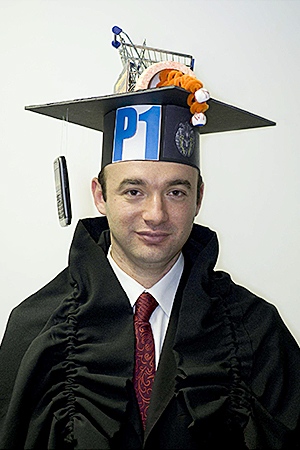Ahmed El-Rafei
Diffusion Tensor Imaging Analysis of the Visual Pathway with Application to Glaucoma
Abstract
Glaucoma is an optic neuropathy affecting the entire visual system. The world-wide prevalence of glaucoma is estimated to be 60.5 million people. The visual disorder caused by glaucoma can reach complete blindness if untreated. Various treatment approaches exist that can largely prevent the visual disability and limit the vision loss due to glaucoma if the disease is diagnosed in its early phases. Nevertheless, the slow progression of the disease along with the lack of clear symptoms results in the late identification of glaucoma. Moreover, the pathophysiology of glaucoma, and its biological foundation and factors are not yet fully determined or understood. Therefore, novel directions are essential for improving the diagnostic flow and the understanding of the glaucoma mechanism.
Most of the glaucoma diagnostic methods analyze the eye with a main focus on the retina, despite the transsynaptic nature of the fiber degeneration caused by glaucoma. Thus, they ignore a significant part of the visual system represented by the visual pathway in the brain. The advances in neuroimaging, especially diffusion tensor imaging (DTI), enable the identification and characterization of white matter fibers. It has been reported that glaucoma affects different parts of the visual system. Optic nerve and optic radiation were shown to have abnormalities measured by DTI-derived parameters in the presence of glaucoma. These outcomes suggest the significance of visual pathway analysis in the diagnosis.
In this work, we propose visual pathway analysis using DTI in glaucoma diagnosis to complement the existing retina-based techniques. A system is proposed to automatically identify the optic radiation on the DTI-images. The segmentation al- gorithm is applied to healthy and glaucoma subjects and showed high accuracy in segmenting such a complicated fiber structure. The automation eliminates the necessity of medical experts’ intervention and facilitates studies with large number of subjects. This algorithm was incorporated in a framework for the determination of the local changes of the optic radiation due to glaucoma using DTI. The framework can aid further studies and understanding of the pathophysiology of glaucoma. Moreover, the framework is applied to normal and glaucoma groups to provide localization maps of the glaucoma effect on the optic radiation. Finally, we propose a system that extracts different aspects of the visual pathway fibers from the diffusion tensor images for detecting and discriminating different glaucoma entities. The classification results indicate the superior performance of the system compared to many state of the art retina-based glaucoma detection systems.
The proposed approach utilizes visual pathway analysis rather than the conventional eye analysis which presents a new trend in glaucoma diagnosis. Analyzing the entire visual system could provide significant information that can improve the glaucoma examination flow and treatment.
